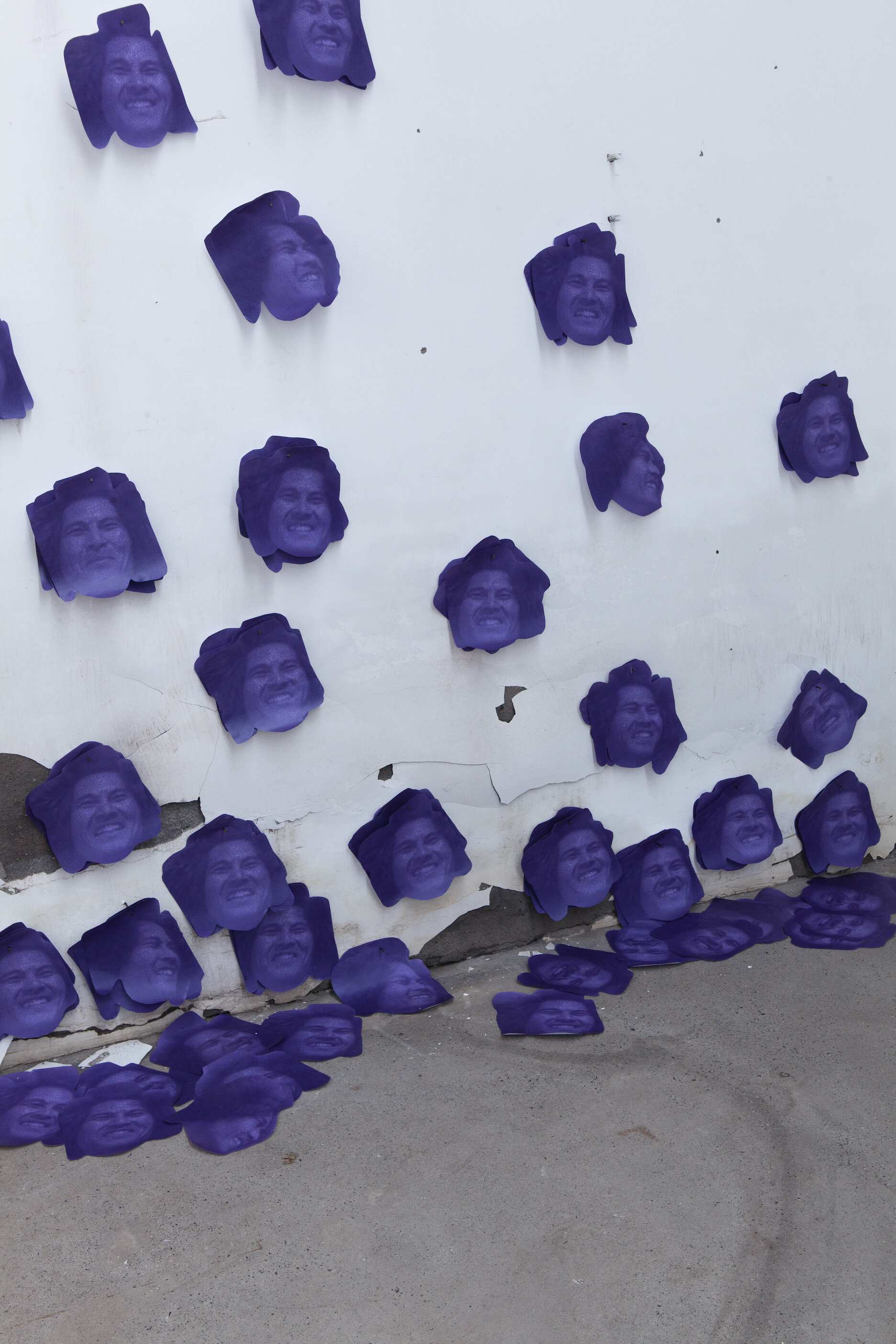
Be all not, be all like.
C-print, multi-media installation
2021
Common Place, Beijing, China
都不是,都像是
彩色打印,综合材料装置
2021
Common Place,北京,中国
This is another work of the artist about "laughter." This work is based on a fragment from the 1950 old Chinese movie "Honoradle Family." During the 1946-1953 Land Reform Movement, the peasants' enthusiasm for joining the army was extremely high. This movie was created based on this historical background. The protagonist Tian Yongtai, who is in his fifties, after his older and younger son joined the army, he actively tried to join the army as well and eventually joined the militia and went to the front. On the way, he saw a group of People's Liberation Army passing by, watching from a distance, trying to see if his son was among them, but did not find his son. So he smiled and said to the person beside him: “They’re all not(my sons), they’re all like(my sons).” He did not express any worries about his son's safety, nor did he express his eagerness to find his son or his fear of war. There is no expression of sadness after seeing the casualties and gunpowder on the battlefield. He just calmly smiled and said to the person beside him: "They’re all not(my sons), they’re all like(my sons).”, with a hint of glory.
Similar laughter can be seen in many Chinese films in the middle of the last century. There is much such laughter in Wang Zhe's other work, “Let’s laugh together." This laughter seems to be a laughter that can only be displayed when a third person is present, and it also seems to be a laughter that can be commonly used in a system.
In our interaction with others in a power structure, laughter is produced. We laugh at our weaknesses, we laugh at our ignorance, we laugh at the laughs of others.
这是艺术家另一件关于“笑”的作品。这件作品是基于一段来自于1950年国产老电影《光荣人家》中的一个片段创作的。1946-1953土改运动期间,农民参军热情异常高涨,这部电影就是基于该历史背景下创作的。主角人物五十多岁的田永太,在大小儿子先后参军后,也积极参军,加入了当时的民兵组织上了前线。在途中,看到一队解放军路过,遥遥相望,想看自己的儿子是不是在其中,却并没有看到自己的儿子。于是笑着对身旁的人说:“都不是,都像是。” 他没有表现对儿子安全的担忧,没有表现想要找儿子的急切,没有表现对战争的恐惧,没有表现看到战场上伤亡与硝烟后的悲伤。他只是淡定地,对身旁的人笑着说:“都不是,都像是。” ,透着一丝光荣。
在上世纪中期的很多国产电影中,都可以看到类似的笑容。在王哲另一件作品“一起笑”中也有很多展现。这样的笑容,似乎是一种必须有第三人在场才会展现出来的笑容,也似乎是在一种可以在体制里通用的笑容。
在我们和他人的权力互动中,笑产生了。我们为我们的弱点笑,我们为我们的无知笑,我们为他人的笑而笑
